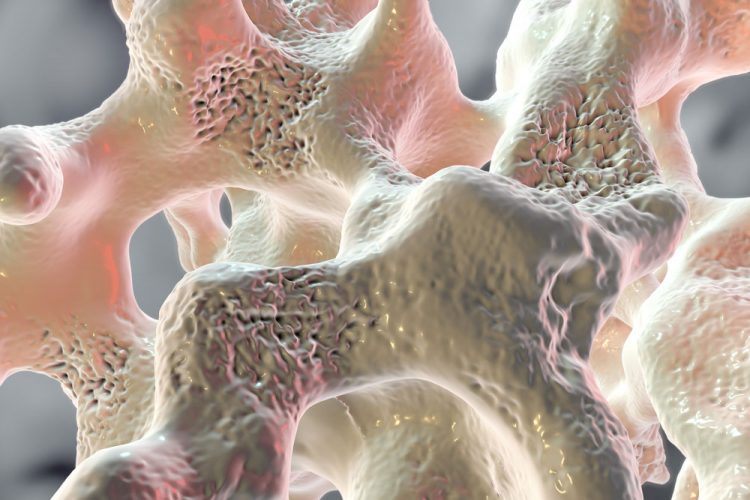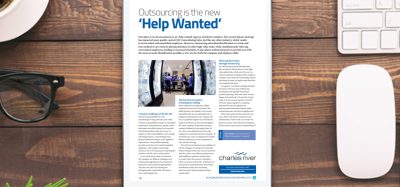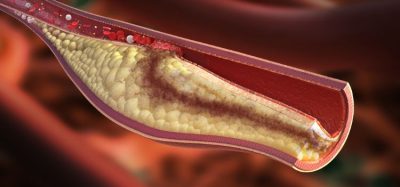FDA approves Prolia for glucocorticoid-induced osteoporosis
Posted: 24 May 2018 | European Pharmaceutical Review | No comments yet
The FDA has approved the use of Prolia for the treatment of glucocorticoid-induced osteoporosis (GIOP) in men and women at high risk of fracture…


Amgen has announced that the U.S. Food and Drug Administration (FDA) has approved the use of Prolia (denosumab) for the treatment of glucocorticoid-induced osteoporosis (GIOP) in men and women at high risk of fracture, defined as a history of osteoporotic fracture, multiple risk factors for fracture, or patients who have failed or are intolerant to other available osteoporosis therapy. This approval is based on data from a Phase 3 study which showed patients on glucocorticoid therapy who received Prolia had greater gains in bone mineral density (BMD) compared to those who received active comparator (risedronate).
“As a leader in bone health with more than 20 years of osteoporosis research experience, we are pleased that Prolia will now be available for patients at high risk of fracture who are suffering from bone loss due to long-term glucocorticoid treatment,” said Dr Sean E. Harper, executive vice president of Research and Development at Amgen. “This is a serious condition that leads to rapid decreases in bone mineral density and increased risk of fracture. This approval gives patients and physicians a new treatment option.”
“Patients on long-term systemic glucocorticoid medications can experience a rapid reduction in bone mineral density within a few months of beginning treatment,” said study lead Dr Kenneth F. Saag, Professor of Medicine at the University of Alabama at Birmingham School of Medicine. “With this approval, patients who receive treatment with glucocorticoids now have a new option to help improve their bone mineral density.”
The approval is supported by the 12-month primary analysis of a 24-month Phase 3, randomised, double-blind, double-dummy, active-controlled study evaluating the safety and efficacy of Prolia 60 mg subcutaneously every six months compared with oral risedronate 5 mg once daily in 795 patients receiving glucocorticoid treatment, greater than or equal to 7.5 mg/day oral prednisone (or equivalent). The study included two patient groups: a glucocorticoid-initiating subpopulation, receiving treatment for less than three months prior to study enrollment and planning to continue treatment for a total of at least six months, and a glucocorticoid-continuing subpopulation, receiving treatment for greater than or equal to three months prior to study enrollment and planning to continue treatment for a total of at least six months. Study results showed that in the glucocorticoid-continuing subpopulation, Prolia demonstrated a significantly greater increase in lumbar spine BMD compared to risedronate at one year (3.8 percent versus 0.8 percent, respectively) with a treatment difference of 2.9 percent (p<0.001). Similarly, in the glucocorticoid-initiating subpopulation, Prolia demonstrated a significantly greater increase in lumbar spine BMD compared to risedronate at one year (4.4 percent versus 2.3 percent, respectively) with a treatment difference of 2.2 percent (p<0.001). Consistent effects on lumbar spine BMD were observed regardless of gender; race; geographic region; menopausal status; and baseline age, lumbar spine BMD T-score, and glucocorticoid dose within each subpopulation.
Safety results were consistent with the known safety profile of Prolia. The most common adverse reactions (greater than 3 percent and more common than active-control group) were back pain, hypertension, bronchitis, and headache. An atypical femoral fracture was reported in one patient treated with Prolia. Serious infection was reported in 15 patients (3.9 percent) in the active-control group and 17 patients (4.3 percent) in the Prolia group. No cases of osteonecrosis of the jaw were reported. Epidermal and dermal adverse events (such as dermatitis, eczema and rashes) were reported in 16 patients (4.2 percent) in the active-control group and 15 patients (3.8 percent) in the Prolia group.
About Prolia
Prolia is the first approved therapy that specifically targets RANK Ligand, an essential regulator of bone-removing cells (osteoclasts). Prolia is approved and marketed in over 80 countries worldwide.
Prolia is approved in the U.S. for the treatment of postmenopausal women with osteoporosis at high risk for fracture, defined as a history of osteoporotic fracture, or multiple risk factors for fracture; or patients who have failed or are intolerant to other available osteoporosis therapy. In the U.S., Prolia is also approved for treatment to increase bone mass in men with osteoporosis at high risk for fracture, defined as a history of osteoporotic fracture, or multiple risk factors for fracture; or patients who have failed or are intolerant to other available osteoporosis therapy. Prolia is also indicated as a treatment to increase bone mass in women at high risk for fracture receiving adjuvant aromatase inhibitor therapy for breast cancer and in men at high risk for fracture receiving androgen deprivation therapy for non-metastatic prostate cancer in the U.S. Prolia is indicated as a treatment for patients with glucocorticoid-induced osteoporosis in men and women at high risk of fracture who are either initiating or continuing systemic glucocorticoids in a daily dosage equivalent to 7.5 mg or greater of prednisone and expected to remain on glucocorticoids for at least six months. High risk of fracture is defined as a history of osteoporotic fracture, multiple risk factors for fracture, or patients who have failed or are intolerant to other available osteoporosis therapy.
Related topics
Drug Development, Drug Targets, Research & Development (R&D), Therapeutics









